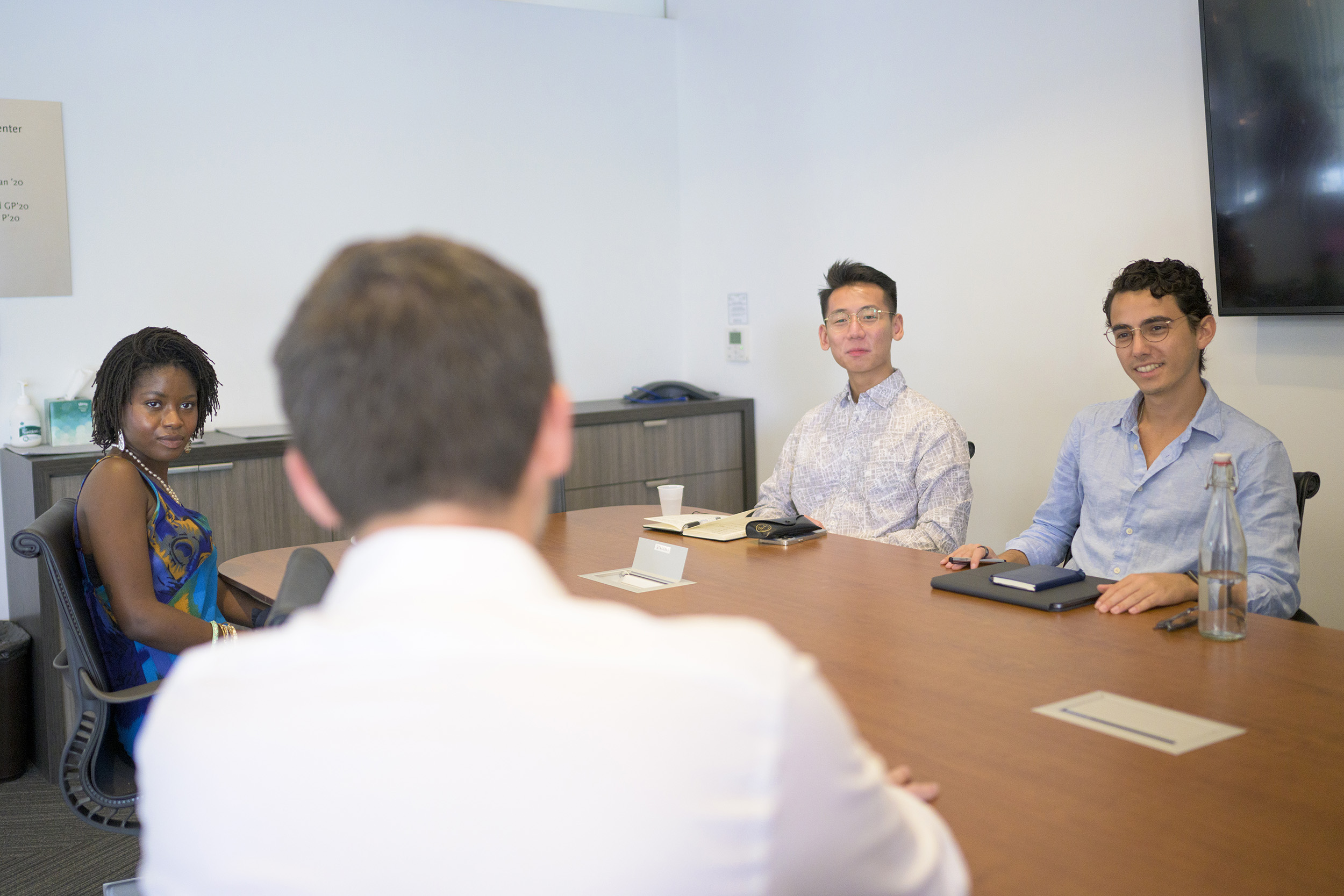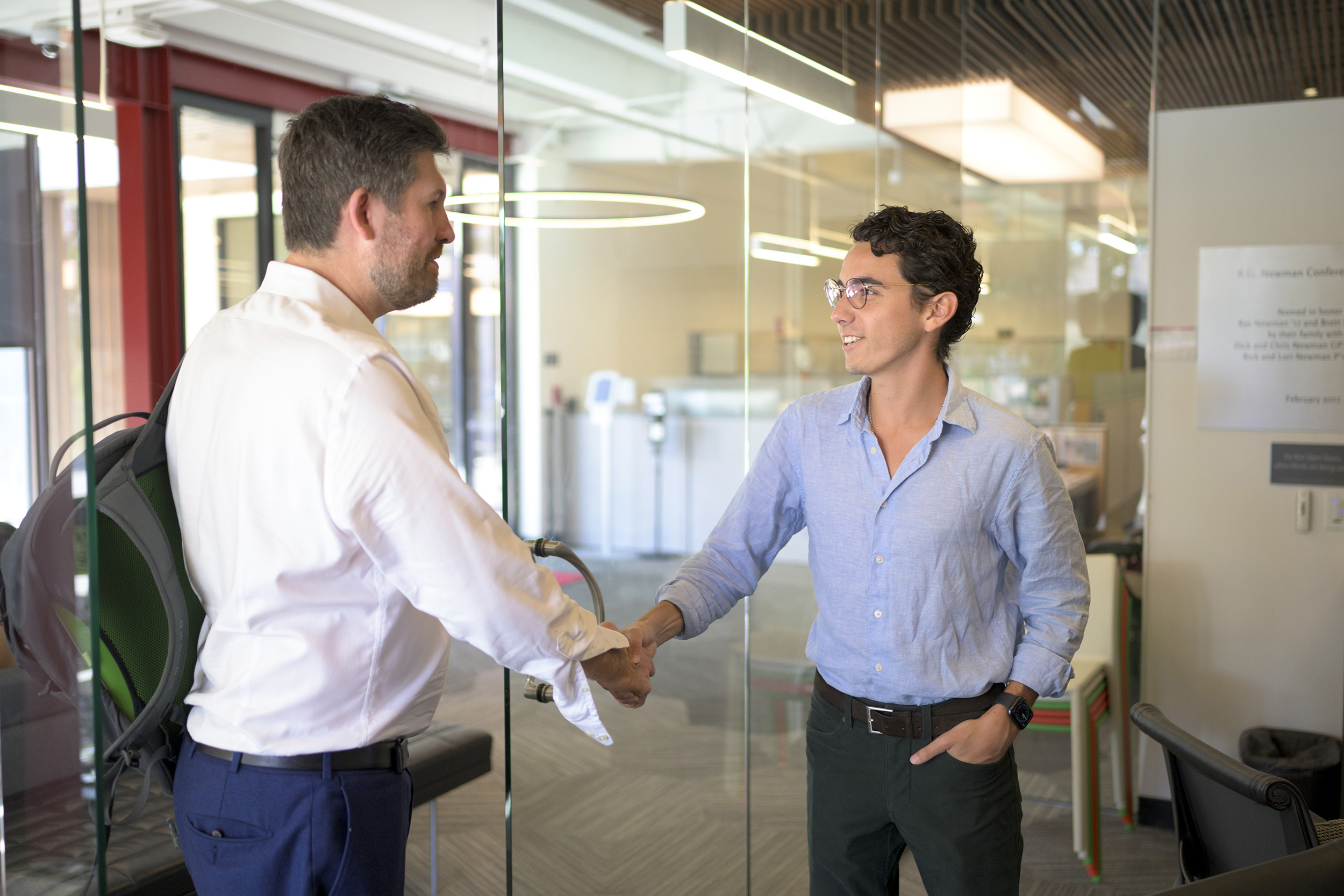Twenty-three years after Billy Grayson ’00 served as an Ath Fellow, he returned to Claremont McKenna College, this time to take the podium as an esteemed speaker, sharing his expertise on the topic, “Energy, Climate, and the Future of the Built Environment.”
Grayson’s Oct. 9 appearance was part of the Athenaeum’s 40th Anniversary Series, which celebrates the achievements of CMC alumni from across the years and invites them to return “home” to Claremont.
Currently, Grayson is the Chief Initiatives Officer at the Urban Land Institute, overseeing the organization’s work on environmental sustainability, housing attainability, infrastructure, real estate economics, and capital markets.

Before giving his Ath talk, Grayson spent time on campus, meeting with students at the Soll Center for Student Opportunity and at the Roberts Environmental Center. Grayson also engaged with prospective CMC students, with 41 joining the Ath audience as part of the Office of Admission’s Preview Program.
With his audience in mind, Grayson, an Environment Economics and Politics (EEP) major at CMC, extolled the virtues of pursuing an interdisciplinary degree. “It’s amazing to me to think about the fact that I’m still using my cross-disciplinary EEP education from CMC,” he said. “And I use it even more now than when I was starting out my career.”
Reflecting the intention of CMC’s new Kravis Department of Integrated Sciences, Grayson noted how meeting the need for “cross-disciplinary leaders and … scientists who understand business and public policy, business members who understand public policy and science, and policymakers who actually ground their policy decisions in science and economics — is really forward thinking.”
Grayson began his talk with “dark and gloomy stuff” — climate change— which Grayson then related to the future of the built environment, discussing the consequences for the real estate and investment community, and concluding with solutions, such as technological innovations, and achievable sustainable urban development policies.
Speaker quote
Tapping into his extensive experience leading corporate sustainability for Fortune 500 companies in real estate and the industrial supply chain, Grayson shared that there are “a lot of reasons to hope. We really have woken up as an economy and an industry. We can find a cost-effective way to get to net zero carbon and also make the investments necessary to make our cities resilient,” he said.

“Cities are going to need to transform to help inspire and incentivize decarbonization and developed environment. This is going to be a fundamental transition around electrifying our cities and getting off fossil fuels,” he said.
Grayson noted that “artificial intelligence and other technological adaptations are going to transform every part of the built environment,” which he said, “will result in a very disruptive time for a lot of parts of the real estate value chain. But there’s still going to be an incredible need for people to build, renovate, run, and finance buildings as well as work in the technology sectors that are going to drive decarbonization and building. Real estate is future-proofed in that way. Everybody needs buildings for shelter. And buildings, as they evolve in this new energy economy, are going to play more roles for more people in the city than ever before.”
One of the solutions that Grayson described is “biophilic design” (an approach to architecture that connects occupants to the natural environment). Saying that this was his chance “to share some funky sci-fi stuff” and “geek out on ecology, and all the things I learned as EEP major,” Grayson, as an example, detailed how jellyfish and mushrooms could be innovated and used for lighting and as insulation.
Student question
Adarsh Srinivasan ’24 asked Grayson about balancing environmental solutions “that are hidden beneath the surface but can have such a big impact, such as upgrades to buildings to have more efficient lighting and reduce energy” alongside more of the “so-called silver bullets” such as carbon dioxide removal from the air.
“The best things that you can do are actually the most boring things,” Grayson said, “which are to close the door (to the outside) and shut the lights off when you leave the room. It’s that simple. Those are facility management strategies of energy efficiency and the cost is zero.”
To sign up for all open Athenaeum events, please register online.

